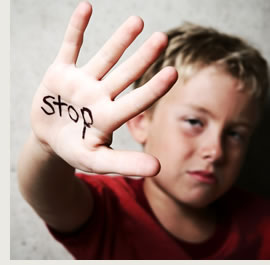|
|
||||
|
||||
| The practice of "grooming" | ||||
| How to identify the signs and what to do if you suspect a child is at risk from a predator | ||||
 When you have young children, you just see the innocence of them, the unconditional trust they have in their parents, family and friends. And it's a hideous thing to have to think that this innocent trust can be abused. When you have young children, you just see the innocence of them, the unconditional trust they have in their parents, family and friends. And it's a hideous thing to have to think that this innocent trust can be abused.Nevertheless the problem of grooming of young children (and families) by predators is sadly very real. Revelations from the Royal Commission have focused attention on the practice of grooming. So what actually is grooming? According to the organisation Parents Protect¹, "Grooming" is a word used to describe how people who want to sexually harm children and young people, get close to them (and often their families) and gain their trust. Sexual abusers are often people we know. It's widely thought that more than 8 out of 10 children who are sexually abused know their abuser. These groomers may hold responsible positions in their local community and can be personable or charismatic. Abusers come from all classes, ethnic and religious backgrounds and may be heterosexual or homosexual. Whilst a high percentage of abusers are men, some are also women. You cannot pick an abuser out in a crowd; however you can identify behavior that precipitates abuse. This behaviour is known as 'grooming' and research shows us that it can occur for up to 12 months before the actual sexual abuse take place. Grooming in the real world can take place in all kinds of places – in the home or local neighbourhood, the child's school, youth and sports clubs or the church. And it's not just in the "real" world that it happens. These days, children access the Internet from as early as two years old and grooming is just as likely to occur online. Online grooming may occur by people forming relationships with children and pretending to be their friend. They do this by finding out information about their potential victim and trying to establish the likelihood of the child telling. They try to find out as much as they can about the child's family and social networks and, if they think it is 'safe enough', will then try to isolate their victim and may use flattery and promises of gifts, or threats and intimidation in order to achieve some control. The problem is prevalent all around the world and becoming much more so with the advent of the web and all the access it brings. Earlier this month, Outside school hours care was the subject of the second public hearing into institutional responses to child abuse. The Royal Commission heard evidence on the YMCA after school and vacation care program, which employed Jonathan Lord who has since been convicted of abusing children. Being able to identify 'grooming' behaviour is an effective way to prevent child abuse before it occurs. The following extract from a factsheet that was produced by the Network of Community Activities to help child care services identify signs of grooming contains a lot of useful information for parents. It looks at the reasons why people do it. It also offers the tell-tale signs and advises both parents and providers what to do if they suspect someone maybe grooming their children or children within their service. A FACT SHEET ON SEXUAL GROOMING² A lot of information exists about how to respond to sexual abuse once it has been discovered. But the best way of protecting children from harm is to be aware of the behaviours that can lead to sexual abuse before it occurs. These behaviours are called 'grooming'. Organisations with unclear boundaries around contact with children can be magnets to people who wish to 'groom' children for sexual abuse. By learning about the strategies used to 'groom' children and their families and recognising them as inappropriate behaviours in your service you create an environment that will deter infiltration by sexual abusers. Sexual abuse thrives in secrecy and ignorance. By being alert to potential danger signs, we are better able to understand the steps we can take to keep children as safe as possible. How Do People Groom Children for Sexual Abuse?
There may be cause for concern about the behaviour of an adult or young person if they:
References 1. Parents Protect 2. Network of Community Activities Fact Sheet |
|
|||||||||
